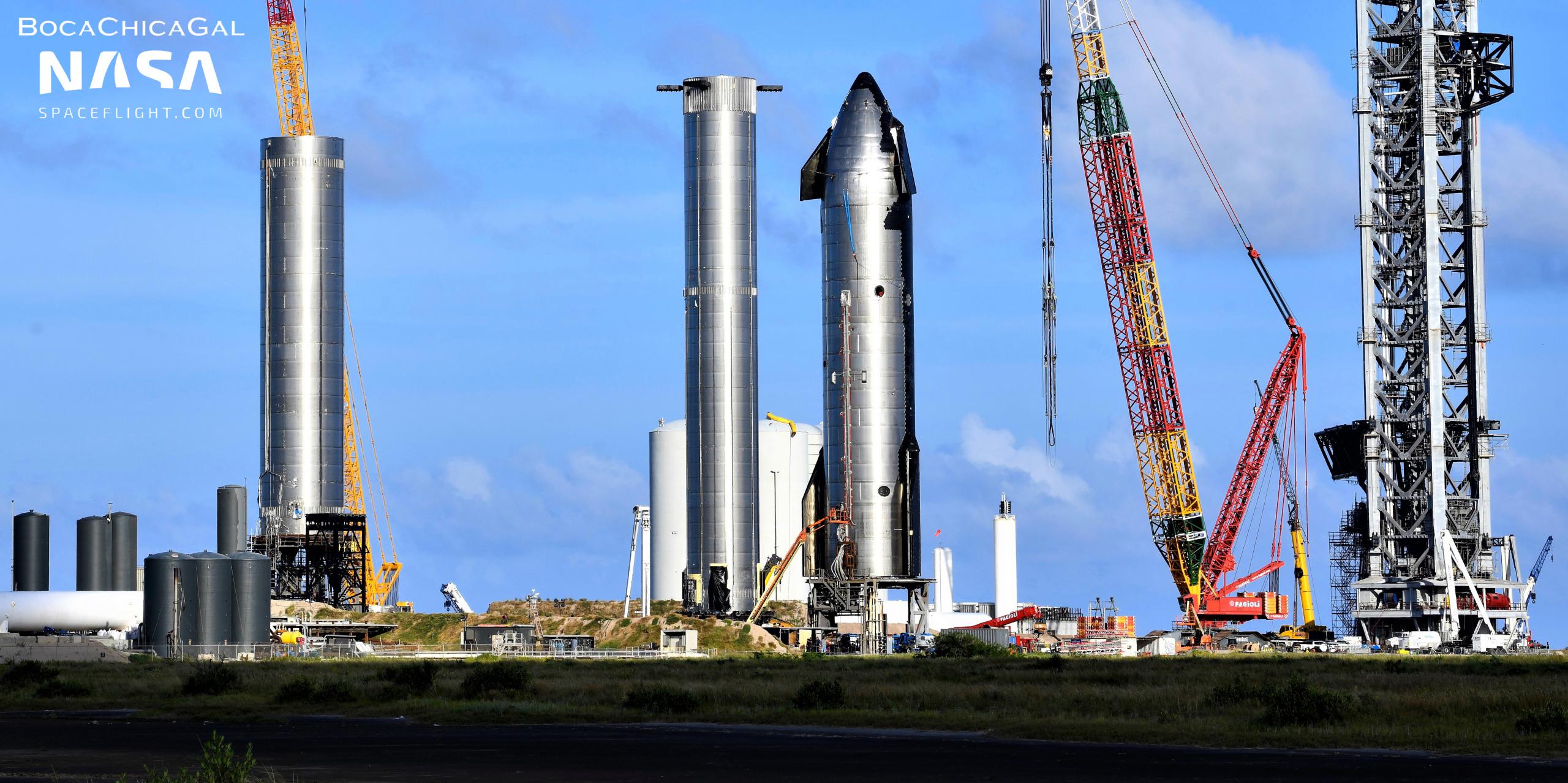
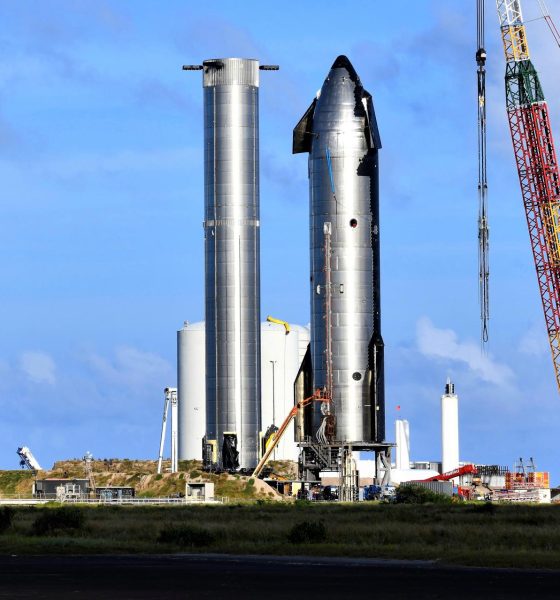
News
SpaceX working on several Starship, Super Heavy upgrades and design changes
Not long after Elon Musk confirmed plans to add three more Raptor engines to Starship and stretch the upper stage’s propellant tanks, the SpaceX CEO has confirmed one of several smaller design changes planned in the interim.
On January 3rd, Musk confirmed that SpaceX is entirely relocating one of two secondary ‘header’ tanks that Starships use to store landing propellant. A graphic sketched on the side of future Starship rings further revealed plans to tweak most of the subsections that SpaceX stacks to form a Starship, complementing an upgraded nosecone design. Finally, another design change was spotted on hardware that will eventually become part of the first full-thrust Super Heavy booster.
According to Musk, starting with Starship 24 (S24), which is likely the next ship SpaceX will complete, the methane (fuel) header tank will be relocated from Starship’s common dome to its nosecone. From the start, Starship’s oxygen header tank has been located in the very tip of the nose – placed in such an inconvenient location for the sole purpose of shifting Starship’s center of gravity forward. Now, the methane header tank will join it in the nose, with the obvious explanation being a need to shift that center of gravity even further forward. It’s possible that this change was planned before SpaceX realized the performance benefits of a stretched, nine-engine Starship, but it could also be a preemptive modification meant to counteract the added weight of three more Raptor engines and longer tanks.
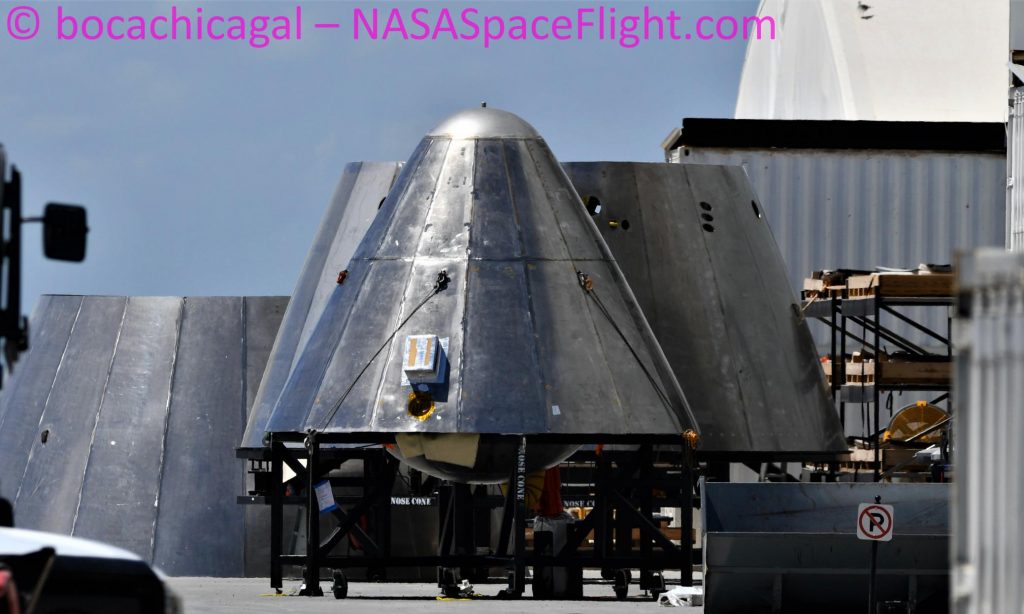
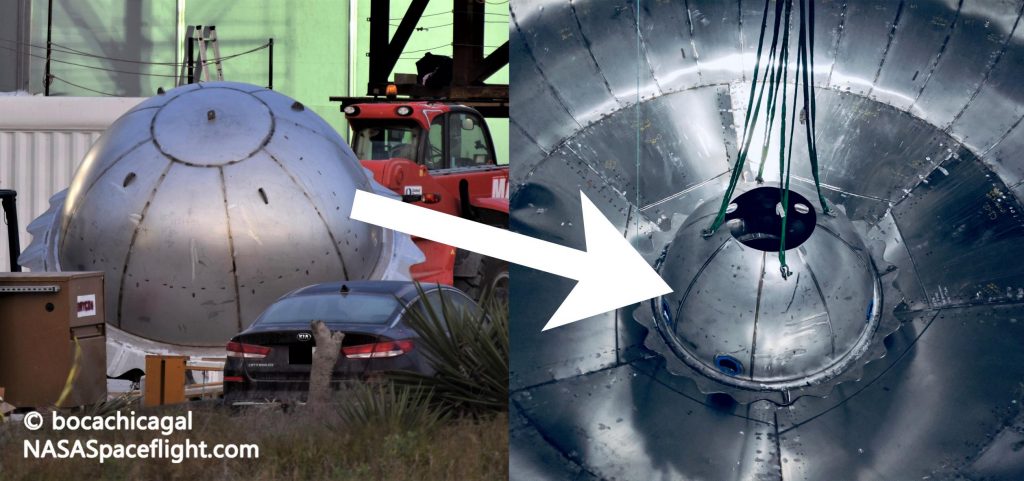
Musk’s confirmation of the methane header tank’s relocation came just a few days after a drawing on the side of a Starship section further confirmed several more minor design changes. Starbase ‘hieroglyphics’ are not uncommon, as SpaceX engineers and technicians have often used hardware itself as a sort of whiteboard to sketch out plans and literally annotate ongoing work. This particular drawing was exceptionally detailed and useful, effectively showing exactly how Starship’s design will change beginning with Ship 24. The changes are simple enough: in essence, SpaceX will be adding an extra ring to several Starship ‘sections.’ For current ships, six distinct sections are stacked to form the Starship’s cylindrical tankage and hull.
It takes another five stacked sections to complete the current nosecone design. Counting the nose as one, it takes about seven stack operations to fully assemble the basic structure of a Starship. With the design changes sketched out on a Starship S24 ring and an upgraded nosecone that will debut on the same ship, fully assembling a nosecone will now take two or three stacks (down from five) and fully assembling a Starship will take six stacks (down from seven). While obviously not a major redesign, the changes will significantly simplify (and thus potentially speed up) Starship assembly, which will have additional positive follow-on impacts on plumbing, wiring, and heat shield installation.
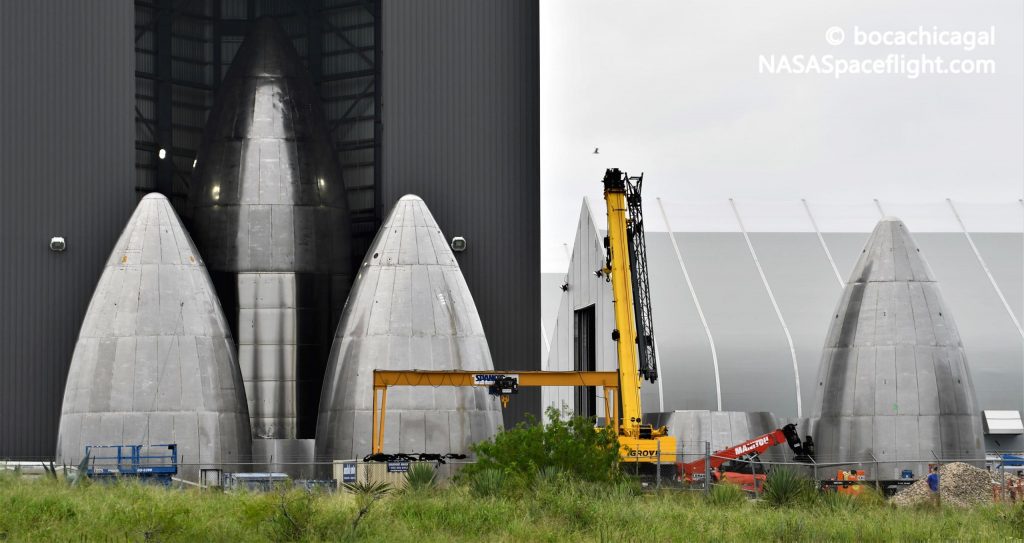
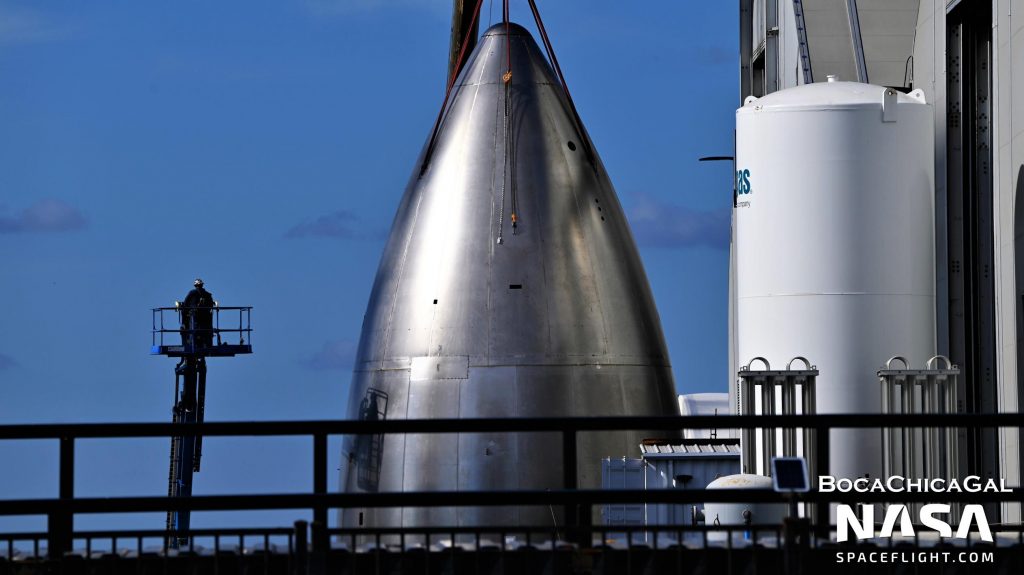
There’s good reason to believe that some of the changes – especially expanding Starship’s nose barrel from four to five rings tall – will end up being applied to Super Heavy, potentially reducing the number of booster ‘sections’ needed from nine to seven or eight. However, there are already signs of some weirder changes being made to Super Heavy’s design. On December 21st, a Super Heavy thrust dome – likely Booster 7’s – was sleeved with several steel rings as part of a now-routine process, partially completing the first 33-engine thrust section. However, instead of the usual aft barrel section comprised of three six-foot-tall (~1.82m) steel rings, this ‘sleeve’ was made up of four ~1.4m-tall rings – the first time in Starbase history that shorter rings have appeared on any hardware.
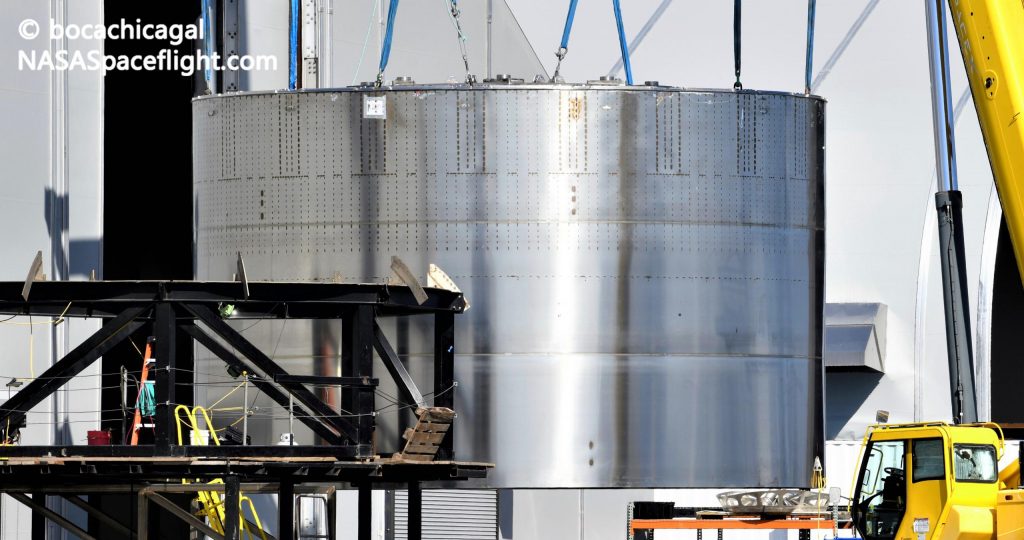
Unlike all the other changes described above, it’s entirely unclear what benefit SpaceX is getting from keeping a given ship or booster section the same height while adding more smaller rings to it – a process that will inherently increase the complexity and amount of work required to complete that section. Regardless, it’s clear that SpaceX is in the midst of a significant period of design revision that could see Ship 24 and Booster 7 debut with a wide range of upgrades and design changes in just a few months.

News
Tesla starts rolling out FSD V14.2.1 to AI4 vehicles including Cybertruck
FSD V14.2.1 was released just about a week after the initial FSD V14.2 update was rolled out.

It appears that the Tesla AI team burned the midnight oil, allowing them to release FSD V14.2.1 on Thanksgiving. The update has been reported by Tesla owners with AI4 vehicles, as well as Cybertruck owners.
For the Tesla AI team, at least, it appears that work really does not stop.
FSD V14.2.1
Initial posts about FSD V14.2.1 were shared by Tesla owners on social media platform X. As per the Tesla owners, V14.2.1 appears to be a point update that’s designed to polish the features and capacities that have been available in FSD V14. A look at the release notes for FSD V14.2.1, however, shows that an extra line has been added.
“Camera visibility can lead to increased attention monitoring sensitivity.”
Whether this could lead to more drivers being alerted to pay attention to the roads more remains to be seen. This would likely become evident as soon as the first batch of videos from Tesla owners who received V14.21 start sharing their first drive impressions of the update. Despite the update being released on Thanksgiving, it would not be surprising if first impressions videos of FSD V14.2.1 are shared today, just the same.
Rapid FSD releases
What is rather interesting and impressive is the fact that FSD V14.2.1 was released just about a week after the initial FSD V14.2 update was rolled out. This bodes well for Tesla’s FSD users, especially since CEO Elon Musk has stated in the past that the V14.2 series will be for “widespread use.”
FSD V14 has so far received numerous positive reviews from Tesla owners, with numerous drivers noting that the system now drives better than most human drivers because it is cautious, confident, and considerate at the same time. The only question now, really, is if the V14.2 series does make it to the company’s wide FSD fleet, which is still populated by numerous HW3 vehicles.
News
Waymo rider data hints that Tesla’s Cybercab strategy might be the smartest, after all
These observations all but validate Tesla’s controversial two-seat Cybercab strategy, which has caught a lot of criticism since it was unveiled last year.
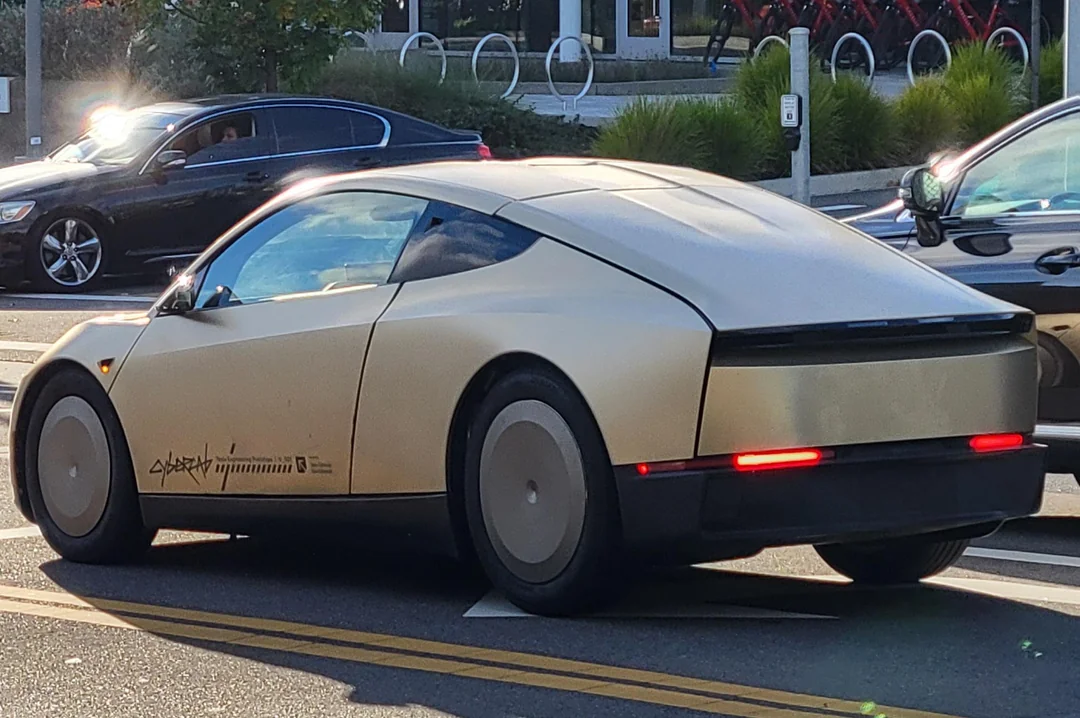
Toyota Connected Europe designer Karim Dia Toubajie has highlighted a particular trend that became evident in Waymo’s Q3 2025 occupancy stats. As it turned out, 90% of the trips taken by the driverless taxis carried two or fewer passengers.
These observations all but validate Tesla’s controversial two-seat Cybercab strategy, which has caught a lot of criticism since it was unveiled last year.
Toyota designer observes a trend
Karim Dia Toubajie, Lead Product Designer (Sustainable Mobility) at Toyota Connected Europe, analyzed Waymo’s latest California Public Utilities Commission filings and posted the results on LinkedIn this week.
“90% of robotaxi trips have 2 or less passengers, so why are we using 5-seater vehicles?” Toubajie asked. He continued: “90% of trips have 2 or less people, 75% of trips have 1 or less people.” He accompanied his comments with a graphic showing Waymo’s occupancy rates, which showed 71% of trips having one passenger, 15% of trips having two passengers, 6% of trips having three passengers, 5% of trips having zero passengers, and only 3% of trips having four passengers.
The data excludes operational trips like depot runs or charging, though Toubajie pointed out that most of the time, Waymo’s massive self-driving taxis are really just transporting 1 or 2 people, at times even no passengers at all. “This means that most of the time, the vehicle being used significantly outweighs the needs of the trip,” the Toyota designer wrote in his post.
Cybercab suddenly looks perfectly sized
Toubajie gave a nod to Tesla’s approach. “The Tesla Cybercab announced in 2024, is a 2-seater robotaxi with a 50kWh battery but I still believe this is on the larger side of what’s required for most trips,” he wrote.
With Waymo’s own numbers now proving 90% of demand fits two seats or fewer, the wheel-less, lidar-free Cybercab now looks like the smartest play in the room. The Cybercab is designed to be easy to produce, with CEO Elon Musk commenting that its product line would resemble a consumer electronics factory more than an automotive plant. This means that the Cybercab could saturate the roads quickly once it is deployed.
While the Cybercab will likely take the lion’s share of Tesla’s ride-hailing passengers, the Model 3 sedan and Model Y crossover would be perfect for the remaining 9% of riders who require larger vehicles. This should be easy to implement for Tesla, as the Model Y and Model 3 are both mass-market vehicles.
Elon Musk
Elon Musk and James Cameron find middle ground in space and AI despite political differences
Musk responded with some positive words for the director on X.

Avatar director James Cameron has stated that he can still agree with Elon Musk on space exploration and AI safety despite their stark political differences.
In an interview with Puck’s The Town podcast, the liberal director praised Musk’s SpaceX achievements and said higher priorities must unite them, such as space travel and artificial intelligence. Musk responded with some positive words for the director on X.
A longtime mutual respect
Cameron and Musk have bonded over technology for years. As far back as 2011, Cameron told NBC News that “Elon is making very strong strides. I think he’s the likeliest person to step into the shoes of the shuttle program and actually provide human access to low Earth orbit. So… go, Elon.” Cameron was right, as SpaceX would go on to become the dominant force in spaceflight over the years.
Even after Musk’s embrace of conservative politics and his roles as senior advisor and former DOGE head, Cameron refused to cancel his relationship with the CEO. “I can separate a person and their politics from the things that they want to accomplish if they’re aligned with what I think are good goals,” Cameron said. Musk appreciated the director’s comments, stating that “Jim understands physics, which is rare in Hollywood.”
Shared AI warnings
Both men have stated that artificial intelligence could be an existential threat to humanity, though Musk has noted that Tesla’s products such as Optimus could usher in an era of sustainable abundance. Musk recently predicted that money and jobs could become irrelevant with advancing AI, while Cameron warned of a deeper crisis, as noted in a Fox News report.
“Because the overall risk of AI in general… is that we lose purpose as people. We lose jobs. We lose a sense of, ‘Well, what are we here for?’” Cameron said. “We are these flawed biological machines, and a computer can be theoretically more precise, more correct, faster, all of those things. And that’s going to be a threshold existential issue.”
He concluded: “I just think it’s important for us as a human civilization to prioritize. We’ve got to make this Earth our spaceship. That’s really what we need to be thinking.”









